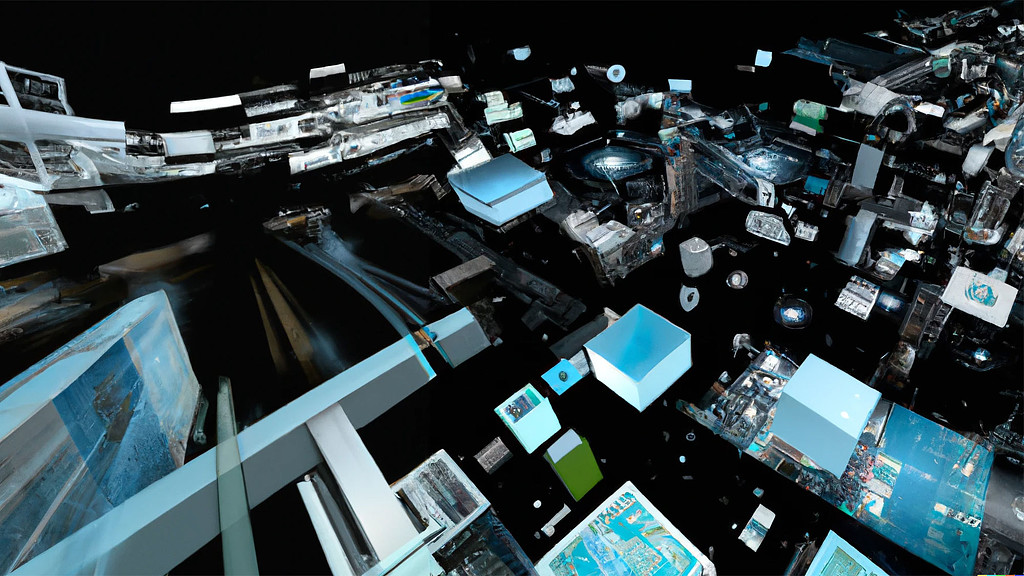The Internet of Places: How Will Web3 Transform the Built Environment?
March 29, 2023
Physical places are now inextricable from the internet. Our buildings have become “smart,” collecting, sharing, and applying intelligence to the “user experience” of the built environment. The metaverse has opened the door to entirely immersive virtual experiences of a place. With internet mediated communication, physical proximity is no longer a precondition for access to community and knowledge.
What does all this mean for the future of human experience, collaboration, and community? Greg Gallimore, Digital Experience Design (DXD) Leader for Gensler’s Northwest region, and Joel Fariss, Gensler Strategy director, sat down with Will Little, cofounder and managing director of Prota Ventures, and Mike Anderson, head of Prota Labs, for a conversation exploring how Web3 will transform the built environment.
Listen to/watch the full recording here.
Joel Fariss: Will, could you start by defining what Web3 is, and how we should understand it?
Will Little: If you ask a hundred people what Web3 is, you’re going to get a hundred different answers. First, it’s a large community of people working to build a better internet. The second is that in the same way that Web 2.0 built relational databases on top of the Web 1.0 networking and protocols that allowed you to create things like MySpace, Twitter, and Facebook, Web 3.0, with the advent of blockchains, allows you to create actual ownership of digital assets. This was summarized extremely succinctly by Eshita, who basically said, “Web1: Read-Only. Web2: Read-Write. And Web3: Read-Write-Own.” And third, Web3 it is a collection of narratives (distributed ledger technology, digital tokens, self-sovereign identity and data ownership, decentralized finance, decentralized autonomous organizations, the Semantic Web, the metaverse, the self-hosted movement, etc.) that are each on their own progression timeline with their own sub-communities working toward building a better internet.
Joel Fariss: Greg, what have you been seeing in terms of how these technologies are beginning to shape the environment?
Greg Gallimore: From a physical design perspective, we’re seeing technologies that impact both the performance and the experience within spaces that we’re creating. We have sensors capturing real-time data that gets analyzed and then visualized onto platforms that we may consider like a metaverse, or what we prefer to call virtual worlds. We’re creating these virtual spaces that either mirror our physical world or become their own construct of a world that you explore for different uses in corporate or industrial applications, and then get to see how spaces and programming are really impacting people.
How do we bring people together and think about technology in a more spatialized way? As Will mentioned, Web 2.0 is the read-write internet — basically an interactive newspaper that’s on an infinite scroll. How do we push beyond that and create a more emotive, more immersive experience that allows us to feel things in digital space? So that’s the experience side of Web3 tools, much of which happens through augmented reality (AR). How we use our technology to have a new lens, a data overlay, onto our physical environment.
And then on the other side, we have virtual reality (VR) tools — completely having experiences in virtual spaces that allow us new abilities. We’re building digital twins of entire corporate campuses in VR on game engine technology that’s fully social, fully integrated with real-time data points so you can actually see the experiences people are having within places in VR, not just constructions of the models themselves. For example, before you actually go into your new office location, you can practice it in a virtual environment.
Some of the best use cases for this technology are for learning, general wellness, and mental health. We see a multitude of use cases using this technology that are improving outcomes for employees, creating better value for companies and firms, and making a more hospitable, inclusive experience. That’s really the value proposition and how we see incorporating Web3 technologies into built environment and real-life human experiences across all industries in which we work.
Joel Fariss: Mike, what are you seeing on the horizon, in terms of what’s next and what clues are these use-cases giving us regarding what might be farther down the road?
Mike Anderson: We’re at this really interesting inflection point of history, where all these technologies are coming together at once. Just in the last 10 years, our technology has moved from being a screen in the corner of a living room to a supercomputer we bring with us everywhere that we go. And it’s getting closer and closer to us. Our phone is kind of like our hand, and our touch, with a little bit of our vision. But pretty soon we’re going to have complete AR senses.
So now, we are at a space with human experiences having a layer of digital over the top of them. And over the next five to seven years, around $19 trillion of assets are going to be tokenized. Digital assets are going to become part of every transaction that you do. There are a ton of ethical questions around it, and it’s unlikely that we’re going to work out all those questions at the speed of change.
Joel Fariss: What’s the difference between a building intelligence model (BIM) and a digital twin?
Greg Gallimore: Right now, we have a BIM model that we connect to infrastructural data in architectural systems to understand how smart buildings are performing and to be able to tune the system with regularity for things that are stable or don’t change often.
It’s really not exciting to look at a digital twin of the building because it’s very predictable. What’s not predictable are humans, and how we create systems that see how humans experience spaces, how we design different elements to enhance productivity, or the experience employees have in a space to have different kinds of outcomes.
When we layer the human element, that, to me, is the evolution of the traditional digital twin to be a more experiential twin, to be purposeful and useful for all people. We can have one model, one kind of digital twin world that can be used for many purposes, not just managing buildings but for managing the experiences within those buildings. You still must have a connected culture, and all of that can happen through a digital landscape that knits people together in new ways.
Will Little: Talk about digital twin. I’m going to be able to train my own avatar to go not just hang out in one virtual mall or park, but potentially thousands of virtual malls or buildings in lots of different metaverses. And I’m going to be able to train my avatar with a large language model like ChatGPT on my own writing, my own thoughts, my own things. And people are going to be able to interact with me in lots of different spaces and metaverses.
Joel Fariss: Yeah, I love that idea. One of the things I think about often is how these virtual environments actually become part of an amenity strategy for developers and landlords. And thinking about the value proposition to a potential tenant in an office environment where you not only have the physical office, but you have an infinitely expandable virtual office that comes as a part of your lease agreement, that you then have access to via a token that grants you access. And you can create whatever kind of working environment you want to in that world, and people can gather and collect there. There are multiple companies now that have adopted this model where they have zero office space. They actually have just pure metaverse space.
Will Little: Joel, where do you see the digital environment, the digital and physical coming together?
Joel Fariss: I think that that protocol is going to be adopted in the public sector first, for example, with DAOs (decentralized autonomous organizations), where the protocol for governance becomes digitized for how land is used. So, you’re going to start seeing things like that, where the adoption of Web3 allows you to implement a new governance protocol in community engagement and interaction that you don’t have today.
The second thing is not just making a digital twin of the built environment, but actually twinning every piece. So, if there’s a window or a big steel beam that goes into the construction of a new building, that physical thing gets cloned digitally and is laser engraved with a number that references an NFT clone. And that then people can actually buy and sell and trade those NFTs that are representative of the actual physical thing in the building. And so now you're connecting digital value to physical value.
This is also a new business model that developers could adopt. Not only could they have an amenity strategy that includes a metaverse clone of their physical environment, but they could have a revenue strategy that includes the monetization of NFTs tied to the physical objects in the building itself.
Joel Fariss: Do you see digital experiences and tools as improving the workplace and face-to-face time at the office? If so, what kinds of experiences are at the forefront and have the least friction to adopt?
Mike Anderson: Now that we have AI, we can actually just have one or two people working together in a tiny room and the AI does thousands of hours’ worth of work in a few seconds. So, we’re almost like directors now, and we’re co-collaborating on something that would usually take 50 managers who would be managing small groups to bring something back on a three-week basis.
Greg Gallimore: Think about the enablement that AI provides us. This gets us out of our daily grind and closer to the source of our creativity and our passion to be able to make a better impact on the world. We still need to inject humanity into this equation because if we only rely on AI, it’s going to be a reversion to the mean. This is bringing everybody to the same playing field and allowing our creativity, our ideas, and our ability to dream together to flourish.
Will Little: There’s a whole community of people using Web3 and other technologies around social impact. What can we do to help provide foundations so that individual societies around the world will have the tools to identify their own local problems? And then there are other creative solutions to allow them to flourish in their own way. So innovative uses of AI — to give a foundation for others, to start to meet people’s basic needs — that’s where we’re heading.
My call to action is to think about entrepreneurship in terms of social impact. What can we do to help lift each other up? The more of us who are thinking that way and applying all these technologies, the better.
Joel Fariss is no longer with the firm as of 2024.
For media inquiries, email .

